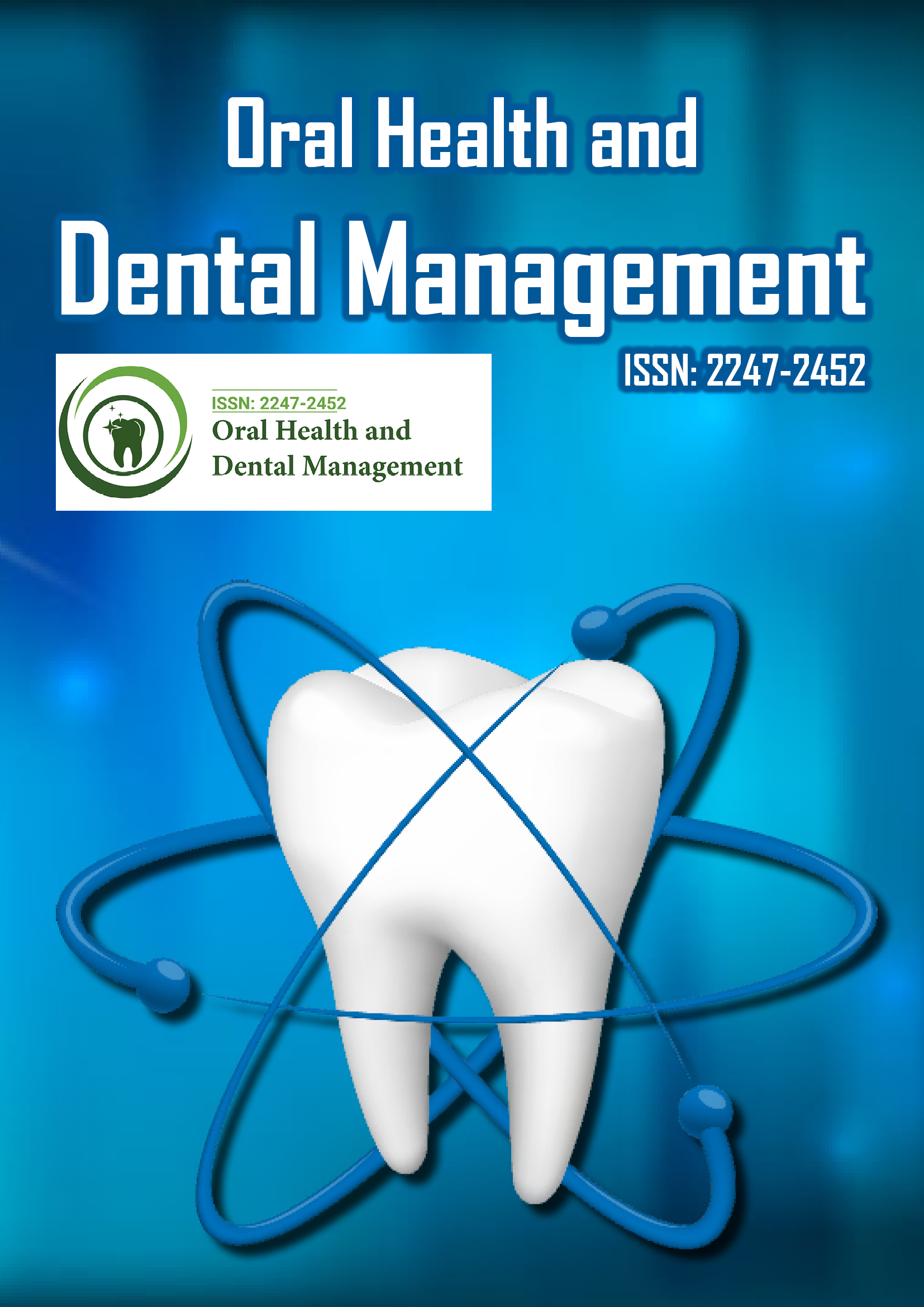Indexed In
- The Global Impact Factor (GIF)
- CiteFactor
- Electronic Journals Library
- RefSeek
- Hamdard University
- EBSCO A-Z
- Virtual Library of Biology (vifabio)
- International committee of medical journals editors (ICMJE)
- Google Scholar
Useful Links
Share This Page
Journal Flyer

Open Access Journals
- Agri and Aquaculture
- Biochemistry
- Bioinformatics & Systems Biology
- Business & Management
- Chemistry
- Clinical Sciences
- Engineering
- Food & Nutrition
- General Science
- Genetics & Molecular Biology
- Immunology & Microbiology
- Medical Sciences
- Neuroscience & Psychology
- Nursing & Health Care
- Pharmaceutical Sciences
Perspective - (2025) Volume 24, Issue 1
Systematic Evaluation of Contemporary Endodontic Practices and Innovations
Mia Quinn*Received: 24-Feb-2025, Manuscript No. OHDM-25-29315; Editor assigned: 26-Feb-2025, Pre QC No. OHDM-25-29315; Reviewed: 12-Mar-2025, QC No. OHDM-25-29315; Revised: 19-Mar-2025, Manuscript No. OHDM-25-29315; Published: 26-Mar-2025, DOI: 10.35248/2247-2452.25.24.1131
Description
Endodontics is a specialized branch of dentistry that focuses on the study, diagnosis, prevention, and treatment of diseases and injuries affecting the dental pulp and the tissues surrounding the roots of a tooth. The term endodontics comes from the Greek words endo meaning inside and odont meaning tooth, reflecting the specialty’s emphasis on the inner aspects of the tooth. The primary goal of endodontic treatment is to save teeth that might otherwise need extraction due to infection or damage of the pulp tissue.
The dental pulp is the soft tissue located in the center of the tooth, containing nerves, blood vessels, and connective tissue. It plays a vital role during tooth development by providing nutrients and sensation. However, once a tooth is fully developed, it can survive without a vital pulp if the root canal system is properly cleaned and sealed. Endodontic therapy is thus concerned with managing diseases of the pulp, which can result from deep dental caries, trauma, cracks or fractures in the tooth, or repeated dental procedures.
The most common condition treated by endodontists is pulpitis, an inflammation of the pulp tissue that can be reversible or irreversible. Reversible pulpitis is characterized by mild inflammation where the pulp can recover after removing the irritant. In irreversible pulpitis, the inflammation is severe and permanent, causing persistent pain and eventually leading to pulp necrosis death. When the pulp dies, bacteria can invade the root canal system and surrounding tissues, leading to infection, abscess formation, and bone destruction.
Diagnosis in endodontics relies on a thorough clinical examination, patient history, and various diagnostic tests. These include percussion tapping on the tooth, palpation, thermal tests using hot or cold stimuli and electric pulp testing to assess pulp vitality. Radiographs are indispensable for visualizing the root canals, periapical area, and extent of disease. In some cases, advanced imaging techniques like Cone-Beam Computed Tomography (CBCT) provide three-dimensional views that help detect complex anatomy or pathology.
The procedure begins with access cavity preparation, where the dentist creates an opening in the crown of the tooth to reach the pulp chamber. Specialized instruments, such as endodontic files, are used to clean and shape the canals mechanically while irrigating with antimicrobial solutions like sodium hypochlorite to disinfect. Once the canals are adequately prepared, they are dried and filled with gutta-percha and a sealing cement to prevent bacterial leakage. After root canal therapy, the tooth is typically restored with a permanent filling or a crown to provide structural support and protect it from fracture. Teeth that have undergone endodontic treatment tend to be more brittle, making restoration crucial to long-term success.
In some cases, root canal therapy might not be sufficient to resolve the infection, or the tooth may have persistent symptoms. Endodontic retreatment may be necessary, involving the removal of previous root canal filling materials, re-cleaning, and re-filling the canals. Surgical procedures, such as apicoectomy, are performed when nonsurgical retreatment fails.
Conclusion
Endodontics plays a critical role in modern dentistry by offering solutions for the preservation of teeth affected by pulp and periapical diseases. Through root canal therapy and other advanced procedures, endodontists help maintain dental function, relieve pain, and prevent further complications. Continuous research and technological innovations continue to enhance the effectiveness, safety, and patient comfort associated with endodontic treatments. For patients, timely intervention and proper dental care are key to achieving successful outcomes and maintaining oral health over a lifetime.
